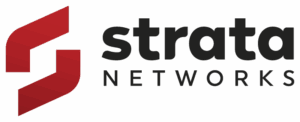The Storm Test: What Weather Reveals About Your Network Infrastructure
Trusted by:

















Introduction: When Nature Stress-Tests Your Network
Telecom networks might look stable on a sunny day — but storms are the real audit.
From heavy rains and snowstorms to heatwaves and high winds, weather doesn’t just disrupt your infrastructure — it uncovers weaknesses that have been quietly building for years.
For many operators, bad weather is less cause and more a revelation. It highlights vulnerabilities long overlooked: aging infrastructure, incomplete asset records, slow response plans, and gaps between departments. This isn’t just about unpredictable weather. It’s about whether your network is truly prepared for the unexpected.
What Weather Really Exposes in Telecom Infrastructure
Storms and adverse weather conditions often don’t cause the problems. They reveal them. Flooded fiber lines, failed cabinets, and inaccessible ducts usually point to long-standing weaknesses. The joint wasn’t sealed properly. A cabinet was installed too low or maybe a route was never documented at all. Unlike storms, extreme heat often doesn’t cause sudden failures—it accelerates deterioration silently until something breaks.
Here are some common failures that surface during extreme weather:
- Flooded handholes and manholes due to poor drainage
- Wind-damaged aerial fiber and microwave dishes
- Corrosion in aging, unsealed cabinets
- Tree falls on poorly routed overhead lines
- Ice accumulation impacting towers and guy wires
- Overheated cabinets leading to equipment throttling or shutdowns
- UV degradation of aerial cables and plastic ducts
- Battery swelling and premature failure in outdoor power units
- Cracking and warping of enclosures due to prolonged sun exposure
- Soil expansion or shrinkage affecting buried cables and ducts
Weather events show the difference between well-maintained systems and those held together by assumptions. Without accurate records and centralized access, even the most modern hardware can’t compensate for outdated workflows.
Most Network Failures Start with Bad Information
One of the most common challenges after a storm is not knowing exactly where things are or what they connect to. Teams rely on outdated Excel sheets or incomplete GIS maps. Sometimes a duct is listed but doesn’t exist in the real world—or the other way around. On the other end of the scale, heat-related degradation is rarely captured in legacy records. Without environmental monitoring or lifecycle logs, critical components like fiber junctions or remote cabinets can fail without warning. Operators often only find out when customers report outages.
The root causes often include:
- Legacy records did not migrate to digital platforms
- Changes made in the field but not updated in systems
- Disconnected OSS/BSS, GIS, and inventory tools
- Lack of mobile data capture during installations
These inconsistencies can be resolved with centralized inventory tools that integrate GIS, logical and physical network models, and service-level overlays. They help engineers understand not just where the failure occurred, but how it impacts customers and services.
What the First Few Hours after a Storm Look Like
Once the storm passes, teams move fast. But what happens next depends heavily on how well your network data reflects reality. Some crews struggle with outdated documentation or mismatched records. Others can quickly open a mobile app, see where the damage likely occurred, and understand which services are affected.
When platforms bring together inventory, service provisioning, GIS data, and live status monitoring, teams gain real-time insight. They know which cables or routes are at risk and can prioritize response by customer impact—not guesswork.
When the Heat Is On: What You Can’t See Will Hurt You
Heatwaves don’t trigger dramatic events like a fallen tree or a flooded route unlike storms, but they erode infrastructure resilience over time. Plastic ductwork weakens. Electronics inside cabinets lose efficiency. Power supplies overheat and fail. By the time a fault surfaces, the damage has been compounding for months. That’s why temperature telemetry and proactive asset tracking are becoming essential. With environmental sensors feeding into the network model, operators can pre-empt failures—not just react to them.
How to Build a Network That Can Handle All Weather Conditions
True resilience starts long before any storm appears on the radar. It begins with careful planning, thorough documentation, and a clear view of your assets.
Here are some proactive steps organizations are adopting:
- Maintain live GIS-integrated network inventory
- Regularly validate field assets against system records
- Build redundancy into vulnerable routes
- Monitor asset condition using environmental telemetry
- Simulate service impact using real-world models
- Integrate early network alerts when temperatures go near to being outside of operational temperatures
Platforms that offer geospatial asset overlays, live service impact maps, and integration with trouble-ticketing systems are making a difference when minutes matter.

Moving Beyond Spreadsheets
Many operators still rely on old spreadsheets or disconnected tools. They’ve served a purpose, but they’re no match for real-world events. Modern systems bring everything together. They connect GIS, asset tracking, service data, and field operations in one view. Everyone—from network planners to on-site technicians—works from the same accurate source.
These systems often include:
- Real-time updates with audit tracking
- Role-based data access for different teams
- Visual change history of network routes
- Field-friendly mobile access to live inventory
This doesn’t just improve efficiency. It builds confidence during stressful situations and allows for continuous improvement.
Readiness isn’t a Checklist. It’s a Mindset
Being ready for a storm doesn’t just mean having spare parts or backup power. It’s about knowing how your organization will respond. Can your systems tell you what’s affected and where? Can your teams communicate clearly across departments?
To maintain readiness, leading teams:
- Conduct seasonal risk assessments
- Train teams on emergency workflows
- Keep provisioning data synced with inventory
- Use outage history to improve network design
Operators who are truly ready don’t wait for a disaster. They run drills, document lessons, and regularly update their network records.
What Bad Weather Conditions Have Already Taught the Industry
In practice, bad weather conditions have uncovered a lot.
One mid-sized European provider found their rural fiber network had never been properly digitized. When a storm hit, it took days just to locate the break. Another operator prevented major downtime because their system caught rising humidity inside a key cabinet and sent an alert in time. These examples show that the difference wasn’t hardware, it was visibility and preparedness.
In both cases, having a fully integrated network inventory platform made the difference. It provided:
- Clear asset visibility across geographies
- Environmental monitoring is integrated into network models
- Alert workflows tied to real-time asset conditions
These capabilities are quickly becoming the industry standard.
Preparing Today for Tomorrow’s Climate Conditions
You can’t prevent every storm or bad weather incident. But you can prepare your network to face one. Every weather event/climate change incident is a chance to test your systems, refine your processes, and improve how you respond.
Ask yourself: if something went wrong today, how quickly could your team find it? Would they know which services are affected? Would they trust the data in front of them? With integrated tools, accurate records, and connected teams, you’re not just reacting. You’re improving. And when the next weather disruption(s) comes, that preparation will show.
If you haven’t reviewed your network’s readiness lately, this may be the right time to explore how a unified view of your infrastructure, services, and field operations could transform how you respond to the next big disruption. VC4 Service2Create network inventory platform is designed to monitor and pre-alert such events, therefore always giving you end-to-end network visibility. Service2Create (S2C) is a trusted platform that is used by both telecom and utilities operators. If you’re curious to see how it can help your operations, then feel free to reach out to our team.






